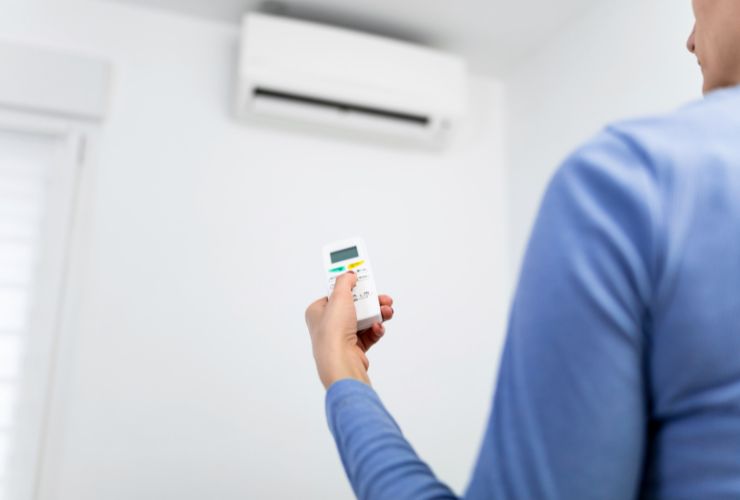Fast read
Air conditioning units have different settings, such as cool and dry, that can be used to make a home comfortable. The dry setting is designed to reduce the humidity and moisture in the air, which can also have a cooling effect.
This setting is usually represented by a water drop and is recommended for humid conditions. The cool setting, represented by a snowflake, cools the air according to the room temperature and is recommended for hot and dry seasons.
Important to note that dry mode is only recommended for a maximum of 1-2 hours and is more energy efficient than cool mode.
When should I use the dry mode on my air conditioner?
Humidity levels in Australia can be high, especially after heavy rain and on muggy summer nights, which can mean a lot of sweaty and unhappy Australians. When this is the case, the first response is to turn on our air conditioning unit to cool us down. This is usually done in the ‘cool’ setting. However, many Australians don’t realise that the ‘cool’ setting is not their only option in such a situation. All major air conditioner units have several different settings such as dry mode.
This means the right one for your current temperature situation can lead to efficiency increases, extra money and energy savings and overall home comfort.

Dry cooling and heating
The dry mode on an air conditioner is another major setting that can ‘cool’ a home. This setting does not feel that different from the cool setting.
However, they can be differentiated by their abilities. Unlike the cool setting, usually represented by a snowflake, the dry mode is generally characterised by a water drop.
The primary role of the dry mode on your air conditioner is to reduce the moisture and humidity in the air, to essentially, as the name suggests, ‘dry’ the air out. As a side effect of moisture being removed comes the cooling effect. What we mean by this is that even if the room is not cooled that much, removing the moisture will make the room feel more comfortable.
Importantly this setting uses less energy than, let’s say, if we cool the room to 19 degrees Celsius from a warm, humid 24 degrees.
When to use dry mode on your air conditioner?
- The weather is pleasant, although the humidity is excessive (such as a humid rainy day, perhaps)
- You should try to conserve power;
- You don’t want the room’s air to be overly cold;
- Throughout the winter months, on a mild day.
Cool heating and cooling
So how is this different from the cooling setting, you may ask? In the cooling mode, your air conditioning unit will cool according to room temperature. Once the system has achieved the desired temperature, the cooling capacity and the compressor will reduce the workload.
This is quite different from the dry mode, essentially a large-scale dehumidifier. When the air conditioner is operating in dry mode, the components of the air conditioner, such as the fan, will still be running.
However, no cold air will be excreted into your room. Instead, the air in your room will enter your air con, remove its moisture, and then be blown back into your room, giving off a ‘cooling’ effect.
When to use the cool mode?
- The temperature and humidity levels are both abnormally high;
- You want the temperature in the room to be stable

Cool and dry mode on an air conditioner
Internally, cool and dry modes do work similarly. In both cases, the internal components of your air conditioner unit are working the same. However, in cool mode, your air conditioner pumps the air with coolant before blowing it into your room.
Dry mode is only recommended for extremely humid conditions. However, even when this is the case, it should only be used for 1-2 hours since extremely dry rooms will be just as irritating and uncomfortable as an exceedingly humid room.
As you can see, the dry mode is a setting on your air conditioner that should not be overlooked. This setting is essential for making your air conditioner more energy efficient.
Recommendations
We recommend that all homeowners and their families not rely solely on cool mode as it is much less energy efficient. In addition, the cool mode should be used for hot and dry seasons, whereas the dry mode on an air conditioner should be used for humid seasons where the temperature isn’t necessarily exhaustingly hot air. Maybe it’s a worthwhile exercise to educate other family members about this difference.
Furthermore, the dry mode is more beneficial for the environment as it does not use the coolant compression activity and, via lower energy consumption, allows homeowners to reduce their carbon footprint further.
If you are looking for more ways in which you want to reduce your energy expenses, consider reading the government recommendation article here.



